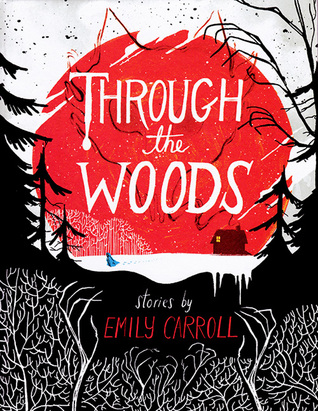 Title: The Last Apprentice: Revenge of the Witch
Title: The Last Apprentice: Revenge of the WitchAuthor: Joseph Delaney
Publisher: Greenwillow Books
Publication Year: 2005
Read: March 2015
Where It Came From: Library
Genre: Middle-grade-to-YA-historical-fantasy-horror
Rating: 4 Boggart Pits
I can trace my interest in these books back many years, based almost entirely on the eye-catching art. The covers for this series are creepy, atmospheric, and striking (and, as I discovered when I read this one, the art continues on the inside, too!). When I saw that it was being made into a movie with the awesome Ben Barnes (a.k.a. Prince Caspian, a.k.a. Dunstan Thorn), I finally decided I had better read the book, since the general chatter I’ve heard about the books didn’t seem to quite match up with the almost goofy quest-fantasy look of the movie trailer. I mean, I’ve heard these books are SCARY, and the movie looks anything but.
The story begins with our narrator, twelve-year-old Thomas Ward, getting sent off to try out to be the apprentice to the local Spook, or the person who roams about the countryside taking care of unwanted supernatural phenomena and creatures, such as boggarts, witches, ghouls, and the like. Thomas is the seventh son of a seventh son, making him uniquely qualified for this job. His Mam believes he is in fact even more uniquely qualified than that, but never quite explains why, which is a strong thread of mystery running through the story. The story follows Tom through his trial period (spoiler alert: he gets the job), and through the early days of his apprenticeship with the Spook. He meets a pointy-shoed local girl named Alice, and eventually ends up inadvertently releasing a big, bad witch called Mother Malkin into the world. He then tries to counteract the bad she does and has to figure out a way to recapture her to save both himself and his family.
The story is very well-written. It is a quick read, but there is a lot of complexity beneath the surface. Tom’s voice shines brightly—he is an honest, straightforward narrator. He is a good person to his core, but we see his struggles as he tries to make the right decisions, and, when he doesn’t, try to fix things. All of the main characters are similarly complex. The Spook, for instance, has a fraught relationship with his brother, a past occupation that comes to light, and qualms about burning witches (too cruel, he says), that show he is more than his gruff, beastie-hunting exterior. Tom’s Mam, too, is wonderfully complex and mysterious—she loves her son, but not in a soft way, and I look forward to finding out more about her in future books. And then there is Alice—torn between her family and wanting to maybe not be like them. She is a particularly compelling character because of her seeming powerlessness in her situation, and her struggle to make choices to gain power in her own life. I was initially a little turned off by the number of “evil” women in the story (the witches), but complex and layered characters like Alice and Mam mitigated that.
As for the creepy factor, this was another book where I found myself thinking, okay, this is a little creepy, but not actually frightening! as I was reading, but then my phone would buzz or someone would come in my room to talk to me and I’d jump about 5 feet in the air. So…not nightmare-inducing, but a little scarier than I initially gave it credit for!
I enjoyed this one, and look forward to reading the rest of the series and delving deeper into these characters. Also, I forgot to mention that there is a passive-aggressive boggart housekeeper—what could be better than that? (Also also, I hemmed and hawed and then included “historical” in the genre tags, because it could easily be a fantasy world, but there was mention of people reading Greek and Latin. So I guess it must be this world, or a version of it, after all?)








